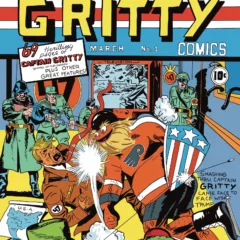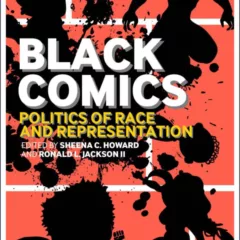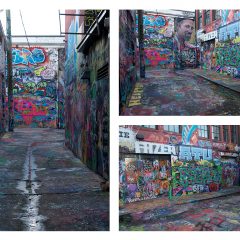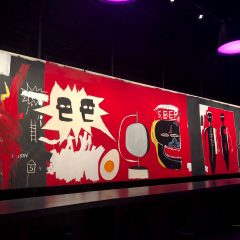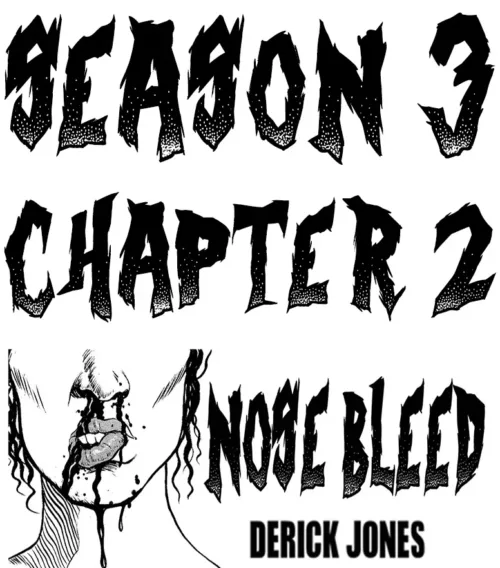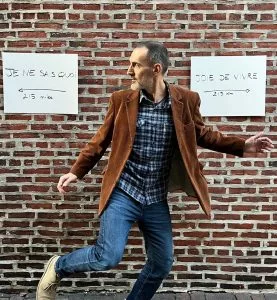
Episode 281 – Roberta talks about Hidden City’s new show and the greening of the School District’s school buses. Ryan mentions his 3 events, though he snuck I a fourth + a shout-out to his Dad, We Here, Cerulean Arts, the Print Center, plus World’s Best Short Films.
Links for the show
Philadelphia School District’s Electric Buses
The Print Center – 50 Years of Philadelphia women’s art leadership
National Museum of the American Indian
Click to expand the podcast transcript
Roberta: Hi everyone, it’s Roberta.
Ryan: And this is Ryan and this is the Midweek News
Roberta: on Artblog Radio. Sorry, it always takes me a minute to find the recording widget.
Ryan: No worries. Every, every iteration of Zoom they change where it goes for some reason.
Roberta: Yes, I know, it’s like Trader Joe’s, they’re always moving the things you love dearly, they move them all the time.
Ryan: Yeah.
Roberta: Cereal. They move it here, they move it there. Whatever.
Ryan: It makes you spend more time in the aisles. That’s the whole point.
Roberta: Onto the news. I guess we could go to the news.
Roberta: I don’t have a whole lot today to talk about. Hidden City. Our pals at Hidden City have a podcast. Did we talk about this before, Ryan? Forgive me if we did.
Ryan: No, go for it.
Roberta: Alright, so Hidden City Daily is an online publication. They cover historic preservation. They cover urban architecture and things that are urbanist concerns about streetscapes, and buildings. And they’re into history. We love them. They’re great. They’re a nonprofit and we’ve done several projects with them in the past. We did Art Safari tours where they talked about the history of buildings in the neighborhood, and we went in and talked about the art in the galleries in the neighborhood. So they’re good, good people.
Anyway, they are starting a podcast on the 17th of October, and let me pull up my stuff here. It’s called “Song of Philadelphia,” a Hidden City podcast, and here’s a link into the trailer so you can listen to it. It sounds like it’s going to be kind of crazy. And their description is, think Hidden City meets an impressionistic version of “This American life,” hosted by a French expatriate who moved here 20 years ago and fell in love with the city.
The host, Julien Suaudeau is Bryn Mawr University’s Senior Lecturer in French and Francophone Studies and Program Director of Film Studies, but in his spare time, he runs around town and collects audio clips. He’s going to be making audio clips and has made some, I think they have three in the works and they’re dropping them this fall.
So congratulations to Hidden City on their new podcast. Very exciting. I can’t wait to listen. I did listen to the trailer. I can’t quite tell from the trailer what the actual podcast is going to be. But it, it gives you a flavor of the tone, so it’ll be upbeat and lively, I guess, from what I listened to. Anyway, it’s really good news and it’ll be available on Spotify and Apple and also on the Hidden City website.
Now, the only other thing that I wanted to talk about, and this is really not even art related, although it tangentially relates to human beings and artists are human beings, so I’ll bring it up anyway. It’s also great eco-news! The Philadelphia School District got $17 million to purchase 22 electric school buses.
Now, I think that’s outstanding, and that gets to the fact that, we’ve got a climate crisis going on and we need more electric everything. And the fact that this money came from the EPA, from the feds to the school district, I’m not sure how it got there, but it’s going to double its fleet of electric school buses, which is another shocker. That is,they already have 22 EV school buses and they’re getting 22 more. So who knew that the Philly school district had 22 electric school buses? They’re getting 22 more. That’s really great. Apparently the Feds are giving $5 billion to municipalities across the country to up their electric vehicle fleets. This is really great.
That’s the extent of my news this week, Ryan. Great. So. What do you have?
Ryan: Well, I have my usual three things plus a shout out. So this week is the Mural Arts, We Here the Roberto Lugo project and show that’s coming up on the 19th, that is from 11 to 3:30. So there’s a public forum and it’s a sculpture party. There’s a list of events that are happening during that time. That looks like a really great show. I mentioned it last week, mentioning it again this week. It’s worth a look at that show. There is a Cerulean Arts Collective members exhibit coming up on the 16th, but their opening celebration will be on the 19th, and that’s from 2:00 PM to 5:00 PM That’s a show with different artists that are part of their collective membership.
Part of (re)Focus, we haven’t talked about (re)Focus in a little while, but the Print Center is doing a 50 Years of Philadelphia Women’s Art Leadership conversation on October 17th from six to seven at the Print Center, part of the (re)Focus show that’s been happening throughout the year. That could be really interesting.
A lot of interesting people, A lot of interesting stories. And I do also want to mention one other thing that, that popped up that I thought looked really interesting and I guess I’m going to go past my three, but I do want to say there is a short film festival that’s happening, the Ashbury Shorts USA, in conjunction with the Garden State Film Festival, and they are doing an evening of the World’s Best Short Films in Collingswood on October 17th at 7:00 PM at the Scottish Rite Auditorium. Could be a lot of fun. If you are interested in short films, that’s October 17th in Collingswood, and then also on October 17th, a quick shout-out, it is my father’s birthday, so I thought I would add that as well.
Roberta: Happy Birthday, Ryan’s father!
Ryan: Everything but my father’s birthday is on ArtblogConnect, so if you want to see those, click through those. But I, what I was doing this weekend, or I guess yesterday, was for Indigenous People’s Day/ Christopher Columbus Day. There was a new article, and if you ever read about Christopher Columbus, he’s most likely to have been born in Genoa, Italy, but some people believe he was born in Spain and has Jewish ancestry.
Roberta: I read that article. I thought that was so interesting. Yeah, they’ve definitively said that now there’s some DNA evidence or something.
Ryan: Somebody said it definitively, and other people definitively said, ‘What are you talking about!?’ So it’s pretty definitively unclear. It’s like quoting Shakespeare. The beauty of quoting Shakespeare is that we spell his name unlike he ever wrote his name. He never wrote it the way we write it. So it was like, definitively we’re just us, and they were just themselves. And that might be a chasm too far to breach, to cross over. We can’t bridge that time gap.
Roberta: Yeah, for sure. Everything is too different.
Ryan: For sure. Yeah. So on Monday I went to the Hirshhorn and also went to the Native American Museum, which I had not spent any time in. And it was not necessarily intentional, but just because it’s on the same side of the mall as Hirshhorn. So it’s just down the street and I like the water features, but I wish there were more bridges, like you’re crossing waters. The whole point of land treaties has often been defined by water, right? We define states and political boundaries and war lines and ceasefire lines by water. And it would be, it’d be, I think, relevant to cross those (at the museum). I think it would’ve been interesting.
Roberta: You’re talking literally crossing bridges.
Ryan: Yeah. So, on the north side of the building, there’s a water feature which creates a moat. But it doesn’t involve or incorporate people. And it wasn’t done to keep people away from the museum. You could easily walk into it. The water comes up to almost an invisible edge at a point, and when the wind blows, it blows the water over the top and onto the sidewalk. So I’m not quite sure what the design was. Many times I see these federal constructions and I say, ‘Who designed this?’ And I was thinking, ‘Who did you sell this to? And what was your pitch?’ I walked out of the Native American Museum thinking, ‘Why don’t they teach any of this in school?’ None of it, I knew none of this. There was a picture, there was a map of California, dozens, dozens of tribal names listed there. Pre-Gold Rush. I can name, what, maybe a dozen tribes across the country. And this was 35 or 40 different tribes in California alone, when the gold rush got there, I should say, middle 1800’s. And so few of them I’ve ever heard of and then they had like pictures of people from different tribes, which is really fascinating.
Roberta: From back in those days?
Ryan: Civil War era
Roberta: Tintypes and ambrotypes and all that kind of stuff?
Ryan: Civil war, so post-gold rush. So people have already been displaced. It was interesting. A big conversation. They did an interesting thing, I’m sure They got a lot of feedback and they said, oh, well this is the best way to do it. They basically said there’s two perspectives, which was a bit strange, but almost all of the displays had two perspectives. One was,
Roberta: It’s gotta be binary in this country. It is always binary.
Ryan: It’s a two party system. Right. So there’s the US viewpoint and then there’s the native tribal lands. Occupiers and occupied. It’s a completely different perspective.
Roberta: Colonizers.
Ryan: The colonizers, and those that they were colonizing. It’s an interesting show, but it should be taught in school. It shouldn’t be strange and foreign, you know? I appreciate that.
Roberta: I think it’s slowly turning around, but not fast enough.
Ryan: I don’t know. We’re still teaching to a test, and that’s not on the test because that doesn’t get you a job. So, I’m not sure. I mean, I was having a conversation about why music and art aren’t taught in school. With a, a retired Philadelphia school district teacher. So yeah, it’s just not on the test. it’s not in the job description.
Roberta: Right. Not valued information.
Ryan: Yeah. Chat GPT does not care if you play the clarinet. But if you can program in R or rust or know what those two things are, then probably. Yeah.
So then I went to the Hirshhorn because Basquiat and Banksy have a show, not even a show. There were like six pieces combined and, and they were in the basement in one small corner room, and it’s only through the the 26th of October. So I thought, oh, I don’t have a lot of time if I want to go see it. And so I went to go see it. It was kind of a nothing show. Not at all that interesting stuff. A few pieces I’ve seen before, but much smaller works. But, it was kind of fun to see them enlarged.
Roberta: It’s really weird. It seems like it’s a show that was put together because it has two B-named artists. And they both were street artists, but there is no commonality between their subject matters at all.
Ryan: Well the two main pieces were, one was a Basquiat piece, and then the other was a Banksy comment on that piece. So it looked like a wheat paste on top of a Basquiat piece. So they were very much twins and they, they were fairly pointed at one another. And I thought that was interesting. But again, it was just like two walls. And that was it.
Roberta: But wait, Banksy is not the same generation as Basquiat.
Ryan: No.
Roberta: Yeah, right. Banksy is contemporary, whereas Basquiat is seventies, I think.

Ryan: Yeah. Eighties. He died in late eighties at 27, something like that. I think he was born in like 1960, something like that. Yeah, he was 27. But then on the fourth floor of the Hirshhorn is a show by two brothers, twin brothers The OSGEMEOS.
Ryan: (speaking with a Portuguese inflection) That Portuguese “Wow” sound. Yeah. So the OSGEMEOS, the twins. They had the entire fourth floor and every room changed in dramatic ways. There was continuity with their characters that they created. But it was just a fun and prolific and playful, exploratory political yet, not yet. It was excellent. Let’s see, and that’s on for a whole year, so you have plenty of time to see that show, but so worth it.
Roberta: Yeah, they are street artists in Brazil and I believe they have a set of characters that they’ve created and some of them are sort of stand-ins for themselves and some of them are other, but it’s cartoonish, right?
Ryan: Simpsons-esque. Because of the coloring? I think.
Roberta: Were they actually paintings on the walls?
Ryan: Yeah.
Roberta: So they came in and they did their thing on the walls inside the Hirshhorn…because they’re street artists. They do things outside usually.
Ryan: Yeah, I can’t tell if that was work that they just had placed there or if they tagged inside the building. Literally. There was a wide breadth of work that they put in there and it covered a lot of different areas, well beyond street art.
Roberta: What do you mean by that?
Ryan: Well, they had one room that was all boxes that were speakers. Each of the boxes had their classic kind of cartoonish shape and face and then they had other ones where it was just all frames and mirrors on the wall. That was also, again, their own. That same sort of character and that same sort of vibe. Then they also had canvas that they had actually drawn on. Totally different style, like they were trying to express completely different artistic styling from it, like a full sculpture of one of their characters that was unzipping its outer layer of skin, and underneath was this illuminated shape, standing in front of this background that looked theatrical. When people say multidisciplinary, you’re like, okay, I expect to see two or three. But this was covering a lot of different things from tagging a subway car to works on canvas to functioning sculpture, like a bedroom scene that was like a diorama, but it was full-size cinematic in essence, like they were creating some sort of specific scene. It was an interesting show. It was a lot of fun. It was playful and they were trying out a lot of different thoughts. You know, there’s definitely some continuity in certain areas, and then other times they were just like flipping it and going in completely different areas. And the mind of a twin, I guess, is slightly different.
Roberta: It seemed to me to call to question why? Why right now, why in the US? These guys have been out there doing their thing on the walls in Brazil for forever and they’ve been getting international fame and I don’t know about fortune, but at least fame and have been putting things up around the world. I think they did a spread in New York at one time and elsewhere around the world. I just want to know why at this particular moment, is it their 15 minutes, so to speak. I mean, more power to them. I think they’re amazing. But I’d like to, I’d like to hear the story of how it arrived at the Hirshhorn. Who brought it to the Hirshhorn, what curator had the brilliant idea of doing this. Because it sounds like it’s a brilliant, brilliant show.
Ryan: It definitely is worth it. You need tickets. They’re just timed tickets
Roberta: And we should mention, all the Smithsonian Museums in Washington are free.
Ryan: They are free. Yep.
Roberta: They’re government supported and that support is your tax dollars, I guess, that go to support these museums. So they’re free to you.
Ryan: They are.
Roberta: Which is a wonderful thing.
Ryan: Yes, it is. So that was my weekend.
Roberta: Well since we’re on Washington, I’ll tell you one thing that happened to me over the weekend is that I got something in the mail that I was not expecting and it came in a box and the box was heavy and I opened the box and this is what was in it. (Shows a big, big book)
Ryan: Oh, wow. Wow. That is heavy. That’s huge.
Roberta: That’s the biggest book I’ve picked up recently. It’s the “National Gallery of Art Collections” mega book.
Ryan: Does it actually say mega on it?
Roberta: No,haha, that’s my word. It looks mega. I haven’t weighed it, but I’m guessing it weighs 10 pounds or more. It’s a thing.
And it has color reproductions of, you know, everything. I think it’s a comprehensive, if not catalog, raisonne of a museum, something like that. So if it’s in the National Gallery of Arts Collection, it’s in the book. (Correction: The National Gallery has over 150,000 pieces. The book has 400 represented.) And this raises the question of when does a book become a burden? You know, do you have a shelf you can put this on that won’t damage the shelf?
Ryan: That’s what coffee tables are for.
Roberta: I guess, or maybe this is for Shakespearean libraries or national libraries. They have all the built-in bookshelves that can hold anything.
Ryan: Yeah. When they become a burden is when you have to move. When you have to move them, you think, ‘I have 8,000 pounds of boxes. Oh, those, that’s the book section. That’s my library. That’s right.
Roberta: Yes.
Ryan: I don’t, I don’t begrudge it, but it’s definitely a lot of work.
Roberta: Yeah. And you wonder about the scale of a book and how they came up with this. I mean, surely it could have been a series of books instead of one book, but here it is one Mega book.
Ryan: well maybe they already have a series and they wanted to put it together in a mega book. Or someone thinks, ‘Wouldn’t it be great if it was all together rather than serialized?’
Roberta: Yes. Well actually, the PR that came with it says that this is in the same series — and it’s from Rizzoli Electa, the publisher — with the Metropolitan Museum of Artas Mterpiece Paintings, The Louvre: the History, the Collections, the Architecture, and the Hermitage. So I think if you had all those books, you probably could lift up those heavy weights and get your exercise.
Ryan: Get your home workout system with books.
Roberta: So, way to go National Gallery. Put that book out there. That was the high point of my weekend.
Ryan: That’s good. Good one.
Roberta: All downhill after that. Not true, but you know, so we should probably not forget to mention our very near and dear to us Art Market, that is going on at Moore College right now. Yeah. If you haven’t been, please join us. We’re going to have a couple of programs, one on October 26th with Beth Heinly and Oli Knowles talking about making comics. If you like their comics on Artblog, we have “The 3 o’clock Book” by Beth Heinly and “Socialist Grocery” by Oli Knowles. They’ve been running for years on Artblog. Come and support them, hear them talk, see them. Check out the market. There’s lots of merch — books, tote bags, hats and posters. And lots of beautiful art to take a look at, and I hope you’ll consider going. It’s open six days a week from 11 in the morning till 5:00 PM so that includes Saturday, Monday through Saturday,
Ryan: And Roberta and I are there every Thursday if you want to come get a tour and talk with us about the art and the artists and the different things that are happening every Thursday through December 7th. So if you want to come out and participate with us, we’ll be there.
Roberta: Yeah. Come and have your voice captured for an upcoming podcast.
Ryan: Yeah. And do you have an event coming up and you want to get that on the podcast? Great. See you on Thursday through December 7th. Come join us.
Roberta: We’ll let’s say goodbye now. Bye Ryan. We’ll. See you soon.
Ryan: Bye everyone. See you soon as well.
Roberta: Bye-Bye. Thanks everybody for listening.
Ryan: Thanks everyone. This has been Artblog Radio’s Midweek News, and I’m Ryan.
Roberta: I’m Roberta. Bye. See ya.
Meet Our Hosts




